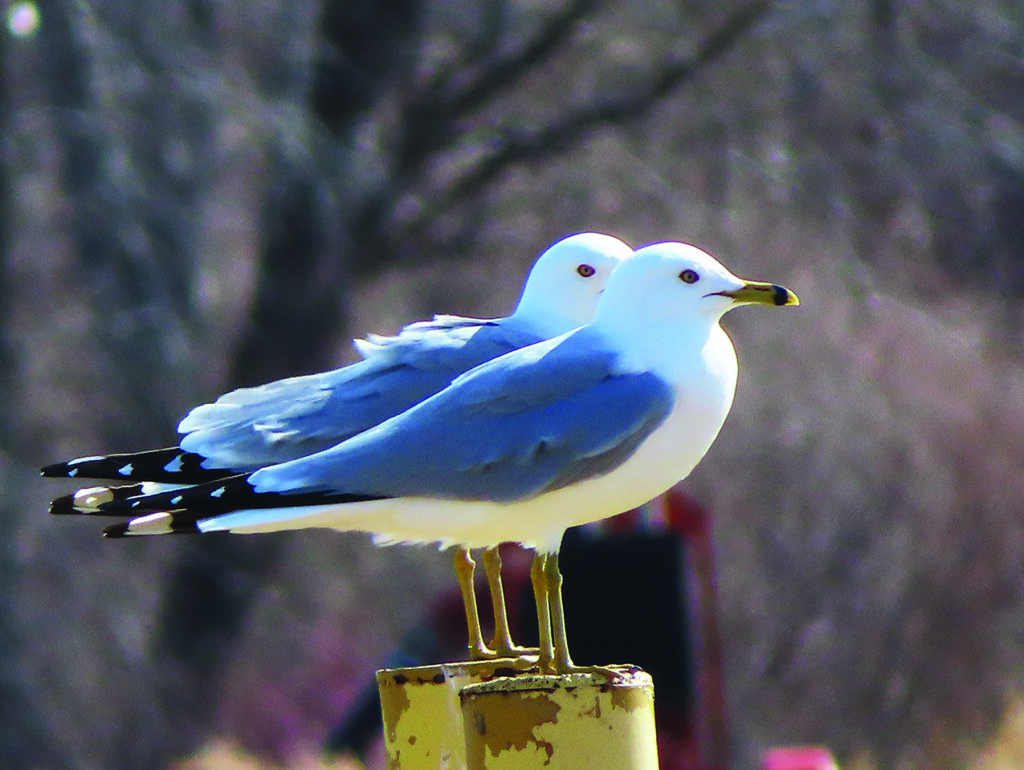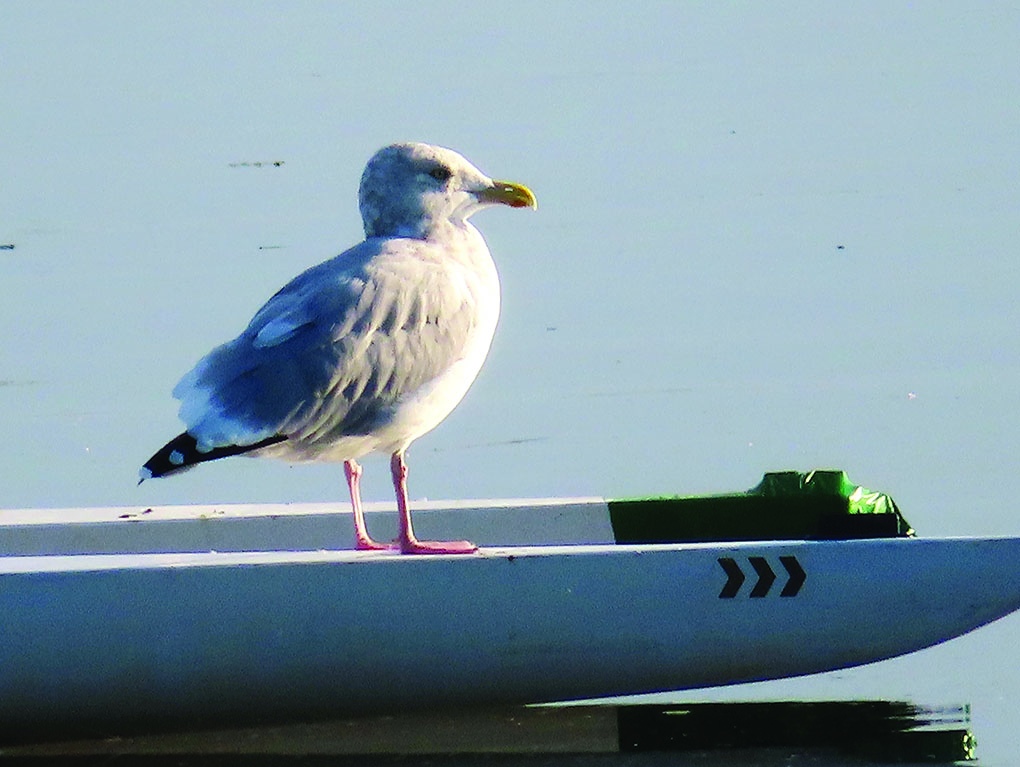By Paul Noeldner
Friends of Urban Nature


Our Birds of the Month for February and March are Wisconsin’s elegant and resilient year-round residents commonly known as “sea gulls.”
The Ring-billed Gull is more common in summer and averages about 18 inches long with a white head, yellow legs, swept back gray and white wings with black tips, a white tail, and what looks like a black magic marker ring around their yellow bill, which gives them their name. Ring-billed Gulls are known to often make loud squealing and cackling calls. Their Latin name “Larus delawarensis,” means “gull-like bird of the Delaware River.”
The Herring Gull is more common in winter and, while they look similar, are noticeably larger than Ring-billed Gulls, averaging about 24 inches long with pink legs, a dark spot at the end of their lower bill, and a thick neck and stout body. Their loud “ha ha ha” calls sound like they are laughing. Their Latin name is “Larus smithsonianus” or “gull of North America.”
Now you know. If you see a large white soaring gull on a lake or flying over in the summer, it is probably a Ring-billed Gull. If it is stout looking or you see it in the winter, it is probably a Herring Gull.
Why do we have “sea gulls” in Wisconsin? While we are a long way from an ocean, Wisconsin has over 800 miles of shoreline on the Great Lakes and 200 miles on the Mississippi. Gulls can easily fly long distances on their 4-foot wingspan, so they spend time all over the state.
As omnivores, they eat a variety of plants and animals as food. They like to go fishing in ponds, lakes and rivers whenever there is open water, even in winter. Gulls supplement their diets with trips to nearby farm fields, where they go on walkabouts with crows in large groups to feast on leftover grain, earthworms, bugs and even mice.
In cities gulls are efficient at finding discarded French fries and other food scraps near restaurants. They can also be seen flying in circles above parking lots in the summer, where they “hawk” for dragonflies in rising warm air. One of the best places to look for gulls in Madison in winter is at landfills, where they gather by the hundreds to pick through tons of garbage for edible tidbits.
Birding can be a competitive sport, and serious birders enjoy visiting landfills to search for occasional rare visitors that are not common in Wisconsin, like Black-backed Gulls and black-headed Bonaparte Gulls.
Winter is a good time to take outdoor walks and look for gulls and other year-round Wisconsin birds. See the Northside News Calendar of Events for free Bird and Nature Adventures and other outdoor nature activities sponsored by your local environmental and Friends of Parks groups.